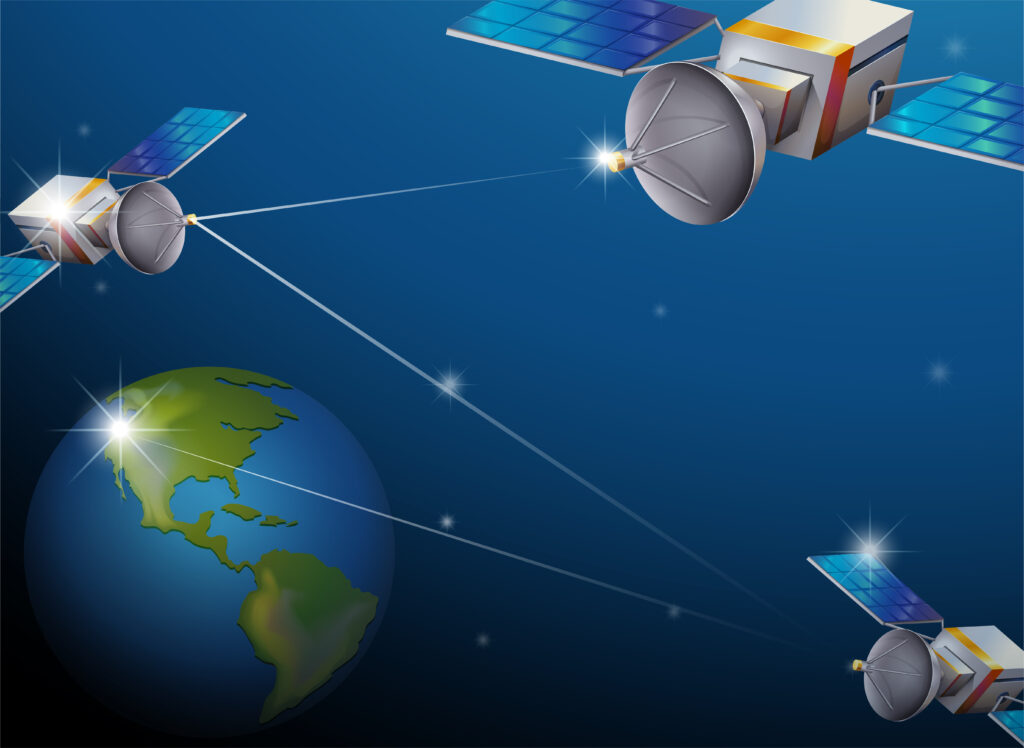List of First Satellites by Country

The Soviet Union’s launch of Sputnik 1 on October 4, 1957, changed geopolitical aspirations and signaled the beginning of space exploration. It was more than just a shiny globe circling the planet; it was a powerful symbol of technological supremacy that sparked a revolution on a worldwide scale. More than 80 countries have since done the same, each launching their first satellites and making their mark among the stars in a journey that is still accelerating with pride and purpose.
Today’s satellite initiatives form a remarkably similar pattern of international cooperation, in contrast to the fierce rivalries of the Cold War era. Nations that previously lacked access to basic communication infrastructure now co-sponsor international payloads or deploy advanced CubeSats. Even countries with limited resources can now confidently enter space thanks to this evolution, which has been significantly enhanced by cost-effective technologies. This hopeful shift towards inclusivity is reflected in the 2023 journey of Vatican City’s SpeiSat and the Albania 1/2 dual launch that same year.
Small research groups, universities, and private companies can now afford what used to require years of industrial might and military-grade funding. In addition to lowering costs, the democratization of orbital access—driven by incredibly effective reusable launch systems like SpaceX’s Falcon 9—has also made satellite development surprisingly accessible. Although the motivations behind each launch vary—whether they are related to digital connectivity, climate monitoring, or educational objectives—the effect is remarkably consistent: it fosters a sense of national pride and global relevance.
To reach this milestone, a number of countries have adopted innovative strategies. For example, Singapore and Taiwan worked together on ST-1 in 1998, demonstrating how joint ventures can be incredibly transparent ways to share knowledge while cutting costs. Even earlier, ten European nations joined forces for the 1968 launch of ESRO 2B, a highly adaptable example of international collaboration that set the stage for the European Space Agency’s subsequent activities.
It’s interesting to note that many of these early satellites weren’t launched domestically. While South Africa, Canada, and Jordan looked to the U.S. and Russian facilities, Bolivia, Laos, Myanmar, and Pakistan used China’s Xichang launch site. Without the need for extensive infrastructure, these shared platforms—which are especially advantageous for new space programs—have grown to be essential facilitators of orbital sovereignty. This kind of access guarantees that innovation won’t be permanently impeded by geopolitical constraints.
Beyond just a technical accomplishment, the first satellite launch frequently sparks changes at home. It encourages future scientists, fortifies educational systems, and increases financial investment in STEM fields. After their first missions, nations like Kenya and Costa Rica saw rapid technological advancements that would have seemed unthinkable just ten years ago. Despite being modest, these results have a big influence on how the country is portrayed as having advanced.
Despite their tiny size, each satellite carries the aspirations, history, and potential of a country. The sky is now replete with signs of resolve, from Russia’s early domination to Bhutan’s Bhutan-1 and Uganda’s PearlAfricaSat-1. These days, satellites are incredibly resilient symbols of independence and vision rather than merely being tools for observation.
As we look to the future, it is evident that more nations will join this orbital chorus, bringing data, encouraging creativity, and changing the definition of space participation. Entry barriers have significantly decreased due to growing private-sector collaboration, open-source aerospace software, and design modularity. Once reserved for giants, space is now an ecosystem in which everyone can contribute significantly, regardless of size or income.
| Country | Satellite Name | Launch Date | Launch Site | Launch Vehicle | Manufacturer |
|---|---|---|---|---|---|
| Soviet Union | Sputnik 1 | 4 Oct 1957 | Baikonur, USSR | Sputnik 8K71PS | OKB-1 |
| United States | Explorer 1 | 1 Feb 1958 | Cape Canaveral, USA | Juno I RS-29 | JPL |
| United Kingdom | Ariel 1 | 26 Apr 1962 | Cape Canaveral, USA | Thor Delta | NASA/SERC |
| France | Astérix | 26 Nov 1965 | Hammaguir, Algeria | Diamant A | CNES |
| India | Aryabhata | 19 Apr 1975 | Kapustin Yar, USSR | Kosmos-3M | ISRO |
| China | Dongfanghong I | 24 Apr 1970 | Jiuquan, China | Chang Zheng 1 | CAST |
| Japan | Ohsumi | 11 Feb 1970 | Kagoshima, Japan | Lambda-4S | ISAS |
| Pakistan | Badr-1 | 16 Jul 1990 | Xichang, China | Chang Zheng 2E | SUPARCO |
| Albania | Albania 1/2 | 3 Jan 2023 | Cape Canaveral, USA | Falcon 9 | Unspecified |
| Vatican City | SpeiSat | 12 Jun 2023 | Vandenberg, USA | Falcon 9 | Unspecified |
Latest
Top Satellite Tracking Services
Satellite tracking services are subtly changing how we communicate, navigate, and handle emergencies in today’s hyperconnected world. These systems, which were once only used by elite agencies, are now incredibly useful instruments for personal exploration, logistics, and international safety.
Satellite trackers function remarkably precisely, monitoring the skies with remarkably clear data and highly effective algorithms, much like a swarm of bees naturally coordinating mid-flight. In addition to facilitating real-time geolocation, these digital sentinels aid in search and rescue operations, environmental monitoring, and disaster relief.
The most effective satellite trackers available today combine portability and robust features in an extremely versatile package. Off-grid adventurers, hikers, and sailors can benefit greatly from devices like the ZOLEO Satellite Communicator and Garmin’s inReach Mini 2, which offer reliable two-way messaging from any location on Earth. In situations where mobile networks fail, their ability to keep people connected is not only amazing, but frequently life-saving.
These capabilities are further expanded by N2YO.com and applications such as Orbitrack or ISS Detector, which visually map satellites in real-time. They have made satellite spotting an entertaining and instructive pastime by fusing GPS data with user-friendly interfaces. Anyone with a smartphone can now access these platforms, which are surprisingly inexpensive and significantly better with each software update.
The number of trackable satellites has grown dramatically as commercial launches continue to soar and constellations like Starlink continue to expand. Nevertheless, these services continue to be incredibly dependable, assisting users in recognizing everything from the International Space Station’s glowing trail to communication nodes.
Satellite tracking has evolved into a technology that greatly empowers everyone, from aerospace professionals to wilderness hikers and stargazers. It is a future-proof invention that quietly hovers above us but has a significant impact on how we connect, explore, and live because of its combination of science, safety, and accessibility.

| Service Name | Type | Key Features | Ideal For | Website |
|---|---|---|---|---|
| Garmin inReach Mini 2 | Two-Way Communicator | SOS, GPS, Weather Updates | Hikers, Adventurers | Garmin |
| ZOLEO Satellite Communicator | Two-Way Communicator | Messaging, SOS, Weather Forecasts | Remote Workers, Travelers | ZOLEO |
| Orbitrack | Mobile App | Real-Time Tracking, Satellite Pass Predictions | Astronomers, Enthusiasts | Orbitrack |
| ISS Detector | Mobile App | ISS Tracking, Alerts, Sky View | Educators, Students | ISS Detector |
| SPOT X | Two-Way Communicator | Messaging, Tracking, SOS | Outdoor Enthusiasts | SPOT X |
About Monitoring Monthly Magazine
Few magazines have struck a deeper chord with enthusiasts in the constantly changing field of radio communications than Monitoring Monthly. This UK-based magazine, which was started in February 2006 by Kevin Nice, G3UNR, became a resource for DXers, amateur radio operators, and shortwave listeners. Its founding signaled a dramatic departure from the long-standing Short Wave Magazine and guaranteed that the illustrious history of radio monitoring journalism would continue unhindered.
Kevin Nice had a clear editorial vision: to create a magazine that inspired as much as it informed. Monitoring Monthly explored a wide range of subjects with a group of seasoned writers, from satellite tracking and data modes to international broadcasts and military communications. Every issue demonstrated the magazine’s dedication to diversity and depth, appealing to both new and experienced enthusiasts.
But as the digital era developed, the difficulties facing print media became more noticeable. Monitoring Monthly made the switch to an electronic format in recognition of the changing tides, providing subscribers with the ease of digital access free from postal delivery restrictions. Because it eliminated extra postage costs and guaranteed timely access to content, this move was especially advantageous for readers from other countries.
Notwithstanding these advancements, the magazine faced challenges along the way. There was a gap in the radio monitoring community by 2009 when Monitoring Monthly stopped publishing. Its impact, however, is irreversible. Many remember the magazine’s in-depth articles and its contribution to the development of a worldwide radio enthusiast community.
When considering Monitoring Monthly’s history, it is clear that its strength was its capacity for innovation and adaptation. It established a standard for other publications negotiating the difficulties of the twenty-first century by embracing digital platforms at an early stage. Furthermore, it made sure that readers remained at the center of its mission by emphasizing community engagement and expert insights.
Monitoring Monthly’s spirit endures in the connected world of today. Promoting the delights of radio monitoring and the excitement of discovery, online forums, digital magazines, and virtual communities all continue to reflect the magazine’s values. The fundamental ideas established by periodicals such as Monitoring Monthly act as beacons of light as technology develops, reminding us of the timeless appeal of radio waves and the tales they convey.

| Feature | Details |
|---|---|
| Name | Monitoring Monthly |
| Editor | Kevin Nice |
| Origin | Successor to Short Wave Magazine |
| Content Focus | Satellite communications, DXTV, datacomms, amateur radio, and more |
| Audience | Radio enthusiasts, hobbyists, and professionals |
| Subscription Information | Available at monitoringmonthly.co.uk |
| Notable Attributes | In-depth articles, expert reviews, and a commitment to quality content |
Monitoring monthly magazine subscription
Since its founding in 1982, Monitoring Times has made a name for itself by serving amateur radio operators, scanner enthusiasts, and shortwave listeners. It became a vital resource for the radio community with its thorough coverage of frequencies, equipment reviews, and technical articles. The History of Radio Worldwide
Monitoring Times launched the MT Express, a digital edition of the magazine, in recognition of the trend toward digital consumption. In addition to broadening its audience, this change provided readers with interactive content that included full-color photos and active web links. However, the magazine ended publication in 2013, ending an era for many loyal readers after an incredible 31-year run.
In 2014, former managing editor Ken Reitz started The Spectrum Monitor (TSM) after Monitoring Times closed. By offering in-depth articles on public service scanning, shortwave listening, amateur radio, and other topics, this digital-only publication sought to carry on the tradition. TSM provides readers with timely updates, multimedia content, and the ease of accessing issues on multiple devices by utilizing the benefits of digital media.
Specialized magazines like Monitoring Monthly and Monitoring Times offer radio enthusiasts carefully chosen, trustworthy content in an era when information is plentiful but frequently overwhelming. Their transition from print to digital is a prime example of their flexibility and dedication to their audience. Whether you’re an experienced operator or an inquisitive novice, reading these magazines can greatly improve your knowledge and pleasure of the radio industry.
| Feature | Monitoring Monthly | Monitoring Times |
|---|---|---|
| Format | Print & Digital | Print & Digital (MT Express) |
| Focus | UK-based radio communications | Global radio communications |
| Editor | Kevin Nice | Bob Grove |
| Frequency | Monthly | Monthly |
| Notable Content | Articles on UK radio activity, equipment reviews | Shortwave schedules, technical projects, product reviews |
| Subscription Info | Monitoring Monthly Official Site | Monitoring Times Subscription |
Which is better, PT365 or monthly magazine?
The current affairs section is more of a strategy than a subject for any serious UPSC applicant. Monthly magazines like Pratiyogita Darpan or The Hindu Review, as well as Vision IAS’s annual program PT365, both support that strategy, but in very different ways. Monthly magazines provide a broad overview of the events of each month, but PT365 cuts through the clutter and condenses a full year’s worth of current events into a format that works incredibly well for preliminary exams.
PT365 is especially helpful because of its specificity. The content is filtered, categorized, and matched to anticipated question trends, all of which are specifically tailored to UPSC’s changing patterns. Aspirants can revise more effectively because PT365 drastically cuts down on revision time, in contrast to monthly magazines that require year-round commitment and retention.
Monthly magazines, on the other hand, are crucial in the planning stage before PT365. They help candidates relate facts to broader themes, create narrative coherence, and promote contextual understanding—all of which are especially helpful for Mains. Essentially, PT365 helps the seed grow before harvest, while monthly magazines sow the seed.
| Feature | PT365 by Vision IAS | Monthly Magazines (e.g., Pratiyogita, The Hindu) |
|---|---|---|
| Format | Annual Compilation | Monthly Issues |
| Best Use | UPSC Prelims Focus | UPSC Mains & General Awareness |
| Content Depth | Condensed, highly targeted | Broader, multi-dimensional |
| Revision Efficiency | Exceptionally high | Moderate |
| Supplementary Tools | Test series, infographics | Editorials, articles, expert opinions |
| Ideal For | Final-phase revision | Year-long preparation |
What are monthly magazines called?
The term “periodicals,” which is used in the academic, literary, and general publishing fields, is commonly used to describe monthly magazines. All publications published on a weekly, monthly, quarterly, or annual basis fall under this category. While the entire publication is referred to by its title, each individual copy is referred to as a “issue.”
The term “monthlies” is informal but widely used in academic and journalistic contexts, especially to differentiate them from dailies or weeklies. Surprisingly, this naming scheme aids in the thematic and chronological organization of content in digital catalogues, newsstands, and libraries.
These magazines cover a wide range of topics, including news, analysis, education, and entertainment. Others (Foreign Affairs, The Economist) target professional circles or niche demographics, while others (TIME, The Week) cater to general readers.
| Term | Description |
|---|---|
| Monthly Magazine | A publication issued once a month |
| Periodical | Any publication issued at regular intervals |
| Edition | A particular version or release of the publication |
| Issue | A single printed or digital release within the series |
| Monthly | Informal term for monthly magazines |
| Journal | Often used in academic or professional circles |
Which is the best monthly current affairs magazine?

Depending on the reader’s objective, choosing the best monthly current affairs magazine is not a one-size-fits-all choice. The solution for UPSC and CSS candidates is to select material that complements their exam structure. The Economist and Foreign Affairs are notable for their comprehensive and in-depth coverage of international affairs. The Recitals and Vision IAS Monthly Magazine are excellent resources for targeted civil service preparation.
Through the combination of fact-based reporting and analytical insights, these publications significantly enhance subject-wise comprehension. Additionally, magazines like Down to Earth offer important background information in fields like science, the environment, and policy that are frequently underrepresented in general dailies.
| Magazine Name | Focus Area | Best For | Format |
|---|---|---|---|
| The Economist | Economics, International Affairs | CSS, Global Perspectives | Print + Digital |
| Foreign Affairs | Diplomacy, Geopolitics | CSS, International Relations | Print + Digital |
| Vision IAS Monthly | UPSC Prelims and Mains | UPSC Aspirants | |
| The Recitals | Topic-wise breakdowns | UPSC, SSC | Print + Digital |
| Pratiyogita Darpan | Hindi/English Current Affairs | SSC, PCS, State Exams |
Is monthly magazine a mass media?
| Criteria | Monthly Magazine Characteristics |
|---|---|
| Frequency | Monthly (Regular) |
| Format | Print or Digital |
| Audience Reach | National/Global |
| Purpose | Inform, Educate, Influence |
| Examples | TIME, The Economist, Vision IAS |
| Classification | Traditional Mass Media |
What is PT 365 used for?
PT365 is a strategy as well as a resource. PT365 is an annual program created by Vision IAS that compresses a year’s worth of current events into a highly organized, test-focused format that is especially designed for the UPSC Prelims.
The main benefit of PT365 is its exceptional effectiveness. Candidates are given a polished and filtered digest that is in line with the UPSC syllabus rather than having to sift through thousands of news clippings. It contains information on international events, economic trends, government policies, and scientific advancements, all of which are selected from reliable sources such as Yojana, The Hindu, and PIB.
| Feature | Description |
|---|---|
| Purpose | UPSC Prelims Current Affairs Preparation |
| Content | One-Year Compilation from Multiple Trusted Sources |
| Structure | Subject-wise Organization (Polity, Economy, S&T, etc.) |
| Duration | 60-Hour Learning Program |
| Provider | Vision IAS |
Which magazine is best for CSS?

The choice of magazines can have a significant impact on exam results for CSS candidates in Pakistan, especially for Current Affairs and International Relations. The Economist and Foreign Affairs are reputable, in-depth publications with a global following. Local exam-prep websites, such as Jahangir’s World Times and The CSS Point, offer focused, exam-focused content that is carefully chosen to satisfy FPSC requirements.
These magazines are not just educational; they are incredibly transparent, assisting candidates in confidently understanding changing political, economic, and geopolitical environments. The uncertainty surrounding CSS‘s unpredictable question framing is greatly diminished by their targeted issue breakdowns and practice questions.
| Magazine Name | Region | Strengths | Format |
|---|---|---|---|
| Foreign Affairs | International | Global Diplomacy, International Relations | Digital |
| The Economist | International | Economic Analysis, Global Affairs | Print + Digital |
| Jahangir’s World Times | Pakistan | CSS-Aligned Current Affairs, Past Papers | |
| The CSS Point | Pakistan | Pakistan Affairs, Model Essays, Current Events | |
| Time Magazine | Global | Political Commentary, Feature Reporting | Print + Digital |
